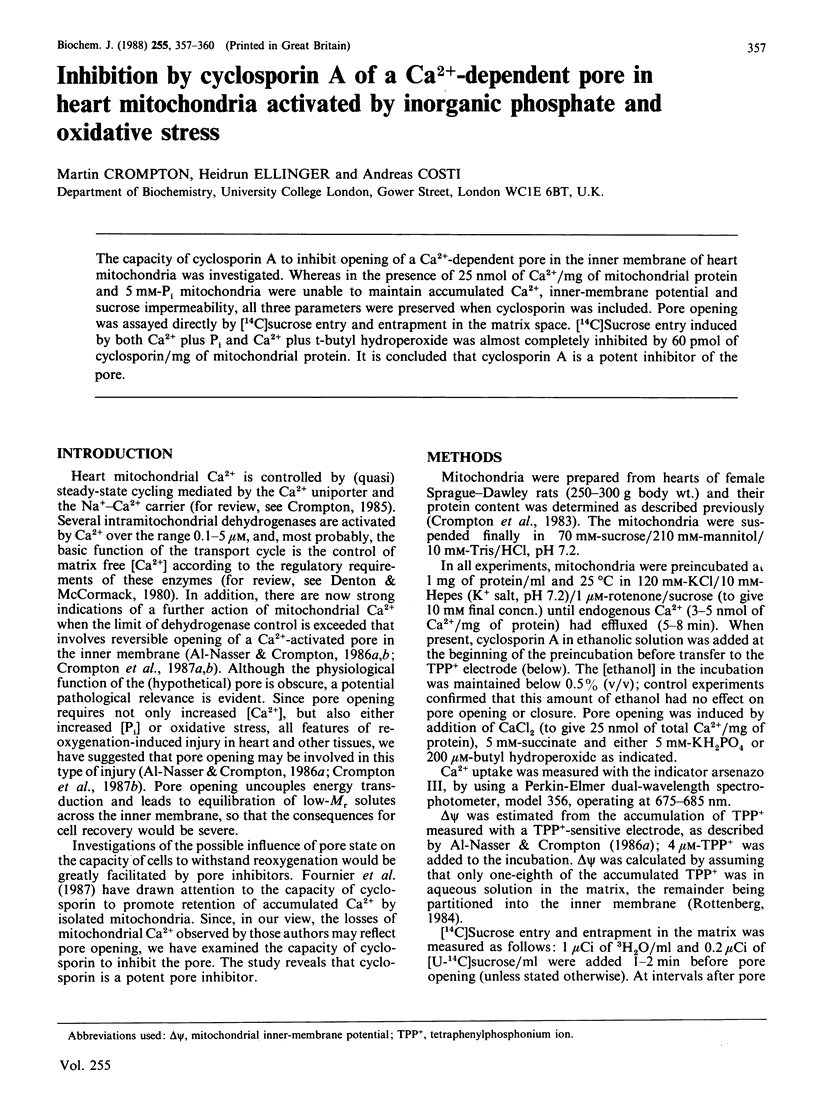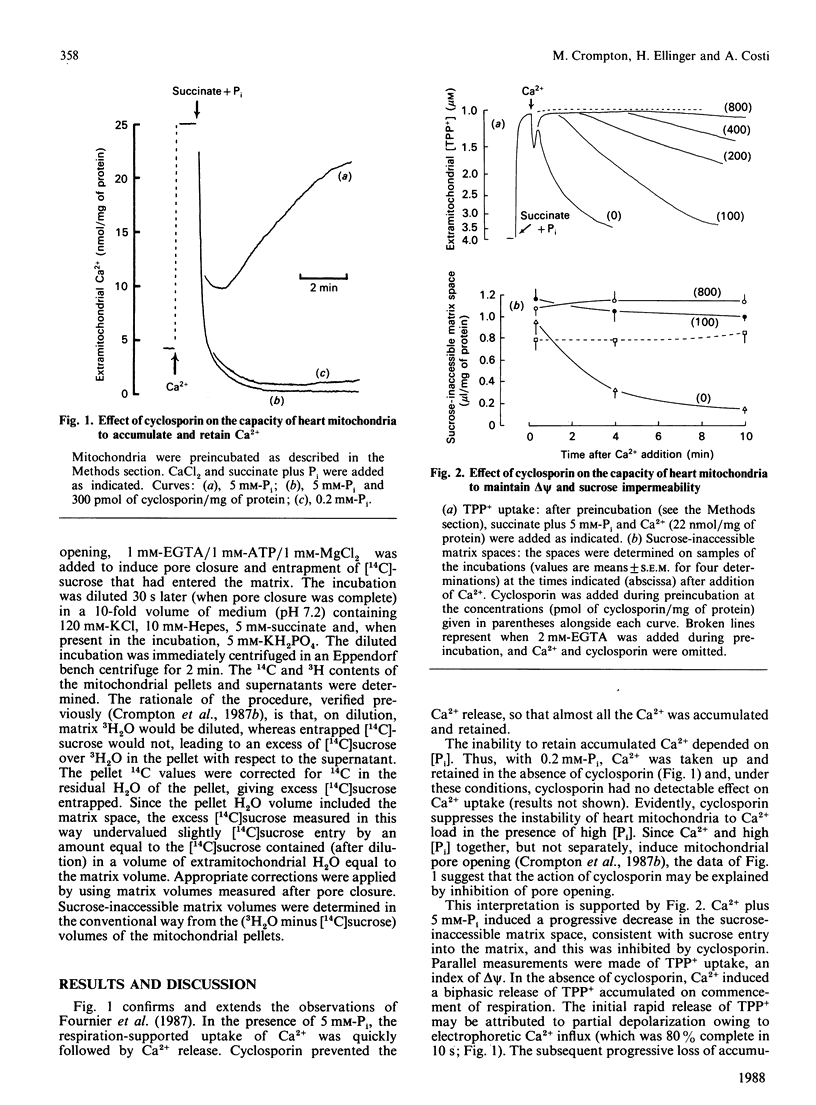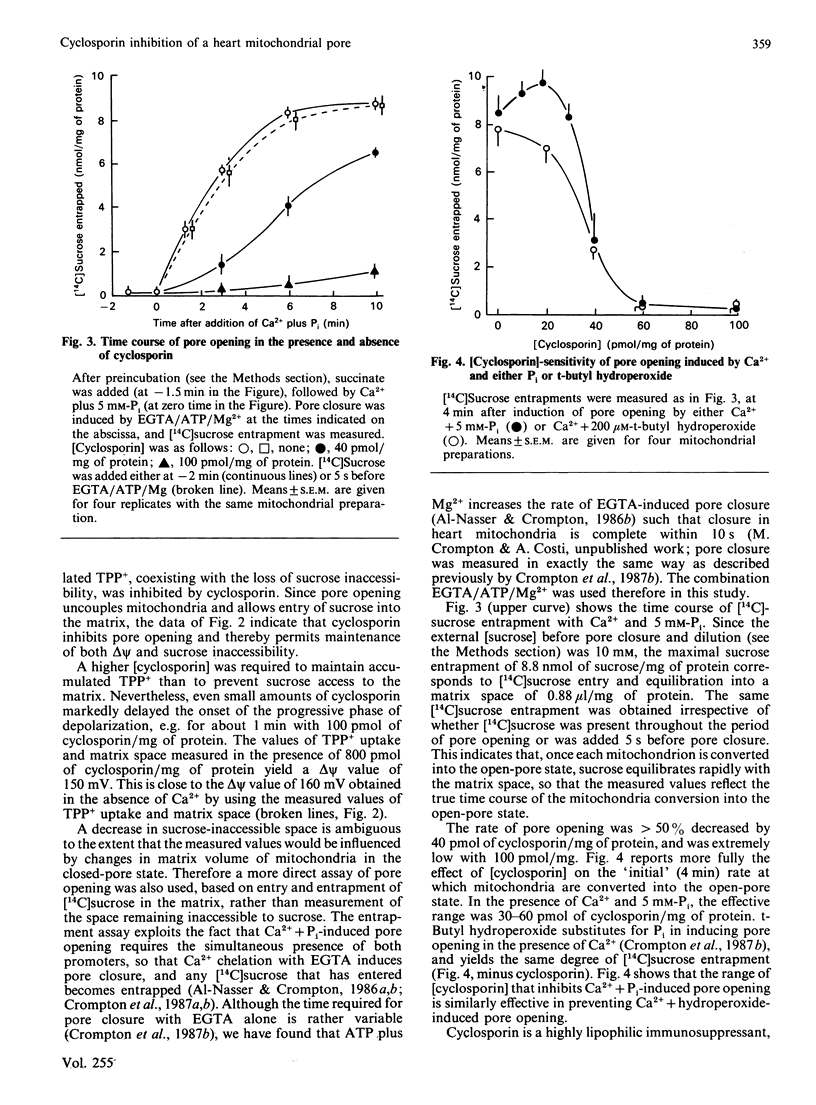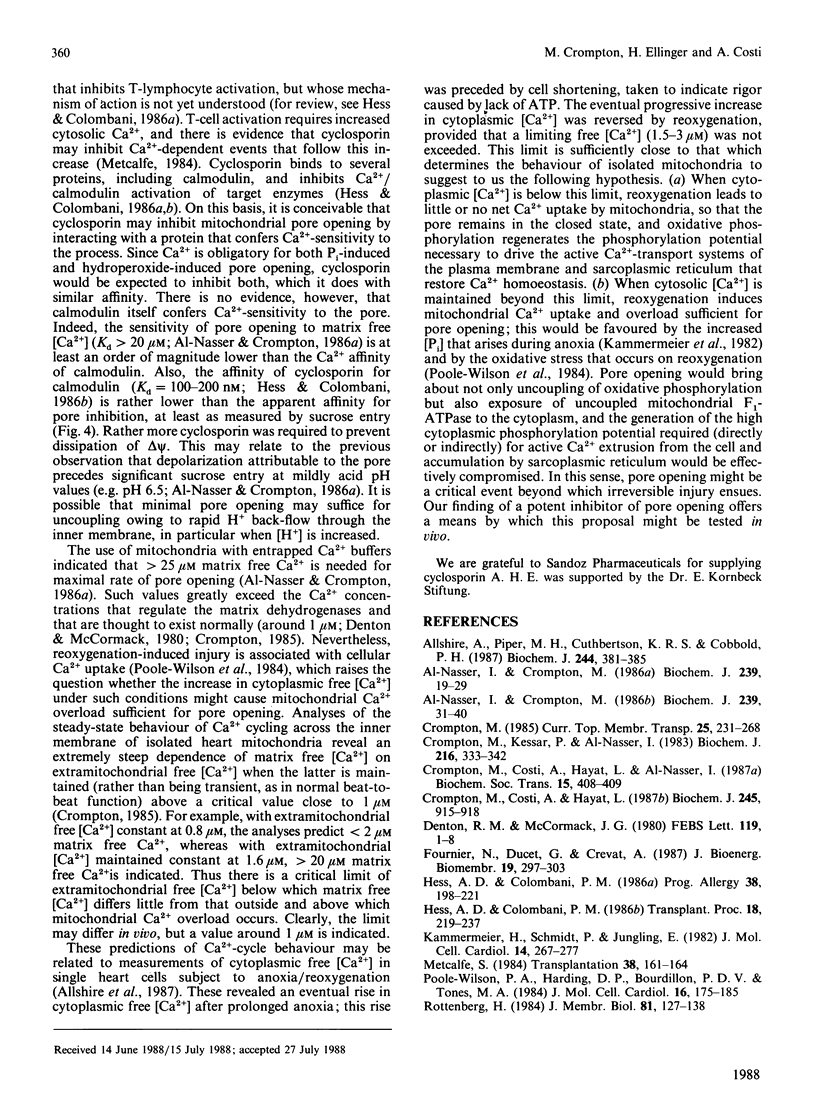Abstract
The capacity of cyclosporin A to inhibit opening of a Ca2+-dependent pore in the inner membrane of heart mitochondria was investigated. Whereas in the presence of 25 nmol of Ca2+/mg of mitochondrial protein and 5 mM-Pi mitochondria were unable to maintain accumulated Ca2+, inner-membrane potential and sucrose impermeability, all three parameters were preserved when cyclosporin was included. Pore opening was assayed directly by [14C]sucrose entry and entrapment in the matrix space. [14C]Sucrose entry induced by both Ca2+ plus Pi and Ca2+ plus t-butyl hydroperoxide was almost completely inhibited by 60 pmol of cyclosporin/mg of mitochondrial protein. It is concluded that cyclosporin A is a potent inhibitor of the pore.
Full text
PDF



Selected References
These references are in PubMed. This may not be the complete list of references from this article.
- Al-Nasser I., Crompton M. The entrapment of the Ca2+ indicator arsenazo III in the matrix space of rat liver mitochondria by permeabilization and resealing. Na+-dependent and -independent effluxes of Ca2+ in arsenazo III-loaded mitochondria. Biochem J. 1986 Oct 1;239(1):31–40. doi: 10.1042/bj2390031. [DOI] [PMC free article] [PubMed] [Google Scholar]
- Al-Nasser I., Crompton M. The reversible Ca2+-induced permeabilization of rat liver mitochondria. Biochem J. 1986 Oct 1;239(1):19–29. doi: 10.1042/bj2390019. [DOI] [PMC free article] [PubMed] [Google Scholar]
- Allshire A., Piper H. M., Cuthbertson K. S., Cobbold P. H. Cytosolic free Ca2+ in single rat heart cells during anoxia and reoxygenation. Biochem J. 1987 Jun 1;244(2):381–385. doi: 10.1042/bj2440381. [DOI] [PMC free article] [PubMed] [Google Scholar]
- Crompton M., Costi A., Hayat L. Evidence for the presence of a reversible Ca2+-dependent pore activated by oxidative stress in heart mitochondria. Biochem J. 1987 Aug 1;245(3):915–918. doi: 10.1042/bj2450915. [DOI] [PMC free article] [PubMed] [Google Scholar]
- Crompton M., Kessar P., Al-Nasser I. The alpha-adrenergic-mediated activation of the cardiac mitochondrial Ca2+ uniporter and its role in the control of intramitochondrial Ca2+ in vivo. Biochem J. 1983 Nov 15;216(2):333–342. doi: 10.1042/bj2160333. [DOI] [PMC free article] [PubMed] [Google Scholar]
- Denton R. M., McCormack J. G. On the role of the calcium transport cycle in heart and other mammalian mitochondria. FEBS Lett. 1980 Sep 22;119(1):1–8. doi: 10.1016/0014-5793(80)80986-0. [DOI] [PubMed] [Google Scholar]
- Fournier N., Ducet G., Crevat A. Action of cyclosporine on mitochondrial calcium fluxes. J Bioenerg Biomembr. 1987 Jun;19(3):297–303. doi: 10.1007/BF00762419. [DOI] [PubMed] [Google Scholar]
- Hess A. D., Colombani P. M. Cyclosporin. Mechanism of action: in vitro studies. Prog Allergy. 1986;38:198–221. [PubMed] [Google Scholar]
- Hess A. D., Colombani P. M. Mechanism of action of cyclosporine: role of calmodulin, cyclophilin, and other cyclosporine-binding proteins. Transplant Proc. 1986 Dec;18(6 Suppl 5):219–237. [PubMed] [Google Scholar]
- Kammermeier H., Schmidt P., Jüngling E. Free energy change of ATP-hydrolysis: a causal factor of early hypoxic failure of the myocardium? J Mol Cell Cardiol. 1982 May;14(5):267–277. doi: 10.1016/0022-2828(82)90205-x. [DOI] [PubMed] [Google Scholar]
- Metcalfe S. Cyclosporine does not prevent cytoplasmic calcium changes associated with lymphocyte activation. Transplantation. 1984 Aug;38(2):161–164. doi: 10.1097/00007890-198408000-00014. [DOI] [PubMed] [Google Scholar]
- Poole-Wilson P. A., Harding D. P., Bourdillon P. D., Tones M. A. Calcium out of control. J Mol Cell Cardiol. 1984 Feb;16(2):175–187. doi: 10.1016/s0022-2828(84)80706-3. [DOI] [PubMed] [Google Scholar]
- Rottenberg H. Membrane potential and surface potential in mitochondria: uptake and binding of lipophilic cations. J Membr Biol. 1984;81(2):127–138. doi: 10.1007/BF01868977. [DOI] [PubMed] [Google Scholar]


